You’ve changed, Australia. From Weet-Bix, VB and Holdens, to muesli, craft beer and BMWs
AUSTRALIA is suffering from a secret identity crisis. You may not have realised it, but our iconic brands are struggling.
IF YOU judge our national identity by how some of our famous brands are going, Australia is having an identity crisis.
Remember when Aussies Kids were Weet-Bix kids? Me too.
Now Weet-Bix is getting thumped by muesli, according to Google Trends data. The blue line in the graph below shows the share of Google searches that mention Weet-Bix.
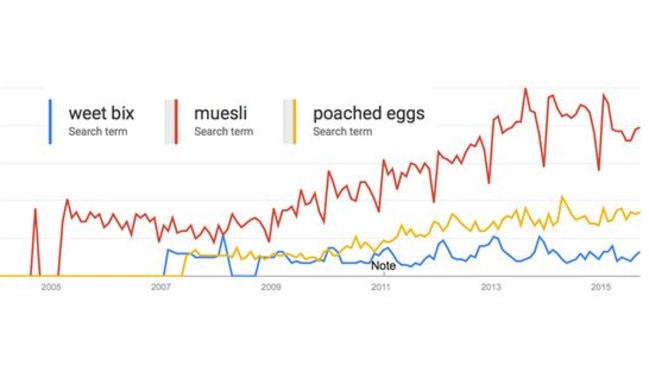
In 2007 people were only slightly more interested in Muesli than Weet-Bix. But now Muesli is about five times more popular. Even poached eggs seem to be streaking ahead.
Is it game over for the kind of breakfast that comes in a box? Are Aussies too snooty for that now?
Google search data is obviously not the same as sales. I wanted to know if we’ve really stopped buying Weet-Bix, so I went digging.
Sanitarium, the company that makes Weet-Bix, keeps their finances private. So I emailed Sanitarium and asked about sales. The response looked bad for the most milk-absorbent breakfast cereal known to mankind.
The Sanitarium spokesperson’s reply email said this: “Weet-Bix is currently in almost half of Australian homes and still growing, particularly with the recent launch of Weet-Bix GO.”
If you’re paying attention you’ll notice that dodges the question. The number of homes Weet-Bix is “in” is not quite the same as sales.
And they seem to be counting something called Weet-Bix Go, which is a sort of biscuit you are supposed to eat without milk. (There’s a few varieties of this new biscuit, including apple and cinnamon, which has almost seven times as much sugar in it as traditional Weet-Bix.)
The launch of new varieties is a pretty big clue to how things are going for traditional Weet-Bix. If your core product is going bananas you don’t need to invent a million alternatives.
If Weet-Bix sales are in decline, it’s not alone. Industry data from January this year shows the whole cereal category has fallen 3.5 per cent in just 12 months.
Whatever the reason, it’s sad to see something like the traditional Weet-Bix get put in the shade. It’s been part of our national identity.
But our national identity crisis goes beyond breakfast.
BEER
VB sales have been struggling. The brand that launched perhaps the most iconic Australian ad ever (“You can get it any old how”) is no longer the automatic choice for a hard-earned thirst. Its market share fell from 30 per cent to 12 per cent between 2004 and 2013.
Beer consumption has fallen for many years and is at 70 year lows. We’re drinking craft beer these days, when we’re drinking beer at all.
Little Creatures, James Squire, and a raft of imported brands are picking off Aussie drinkers who would once have scarcely considered something other than a tinnie of vic.
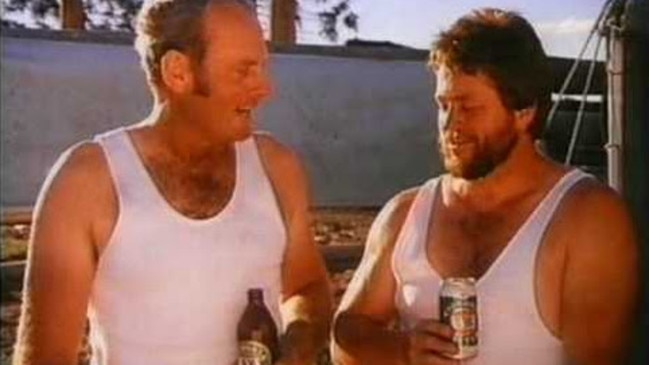
CLOTHING
Aussies often seem to want a brand other people don’t have. That has already caused trouble for some iconic clothing companies.
Surfwear brand Quiksilver (founded near Bells Beach in Victoria) went into bankruptcy in the US last week. Billabong (founded on the Gold Coast) is also suffering from consumer fatigue. Its share price is $0.66, down from over $18 in 2007.
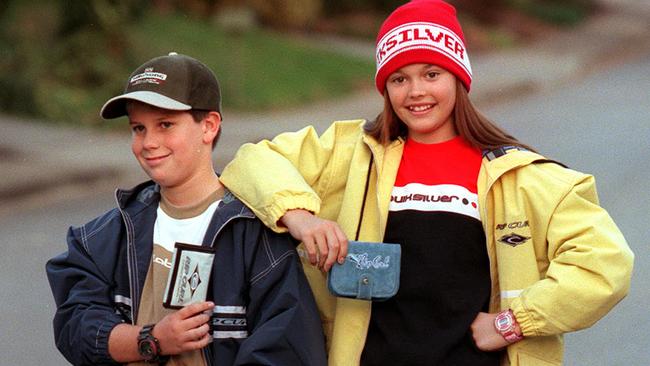
CARS
Where the change in taste for an Aussie icon is really hitting the economy though, is in the garage.
So far this year Australians have bought 17 per cent fewer Fords and 9 per cent fewer Holdens.
But we’ve shelled out for 20 per cent more Mercedes and 14 per cent more BMWs. The fastest growing car brand in the whole country is actually Lamborghini, up over 700 per cent.
That’s part of the reason why Holden is shutting its plant in Adelaide, and why Ford is shutting its Melbourne factory.
It’s the end of an era.
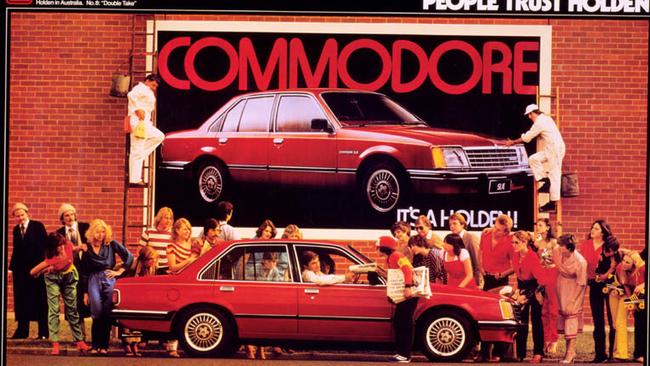
These brands once meant “Australia”. Now they look set to go the way of Akubra hats, Fosters Lager and the Stump Jump Plow. We will still know they’re Australian icons. But in a museum way, not in a use them everyday way.
The reasons for changing icons is complex. Partly, we’re richer and we want nicer things. Partly our society is more diverse. And as Australia grows bigger and more crowded, fewer and fewer of us live outside of cities and towns. We just don’t need Akubras like we once did.
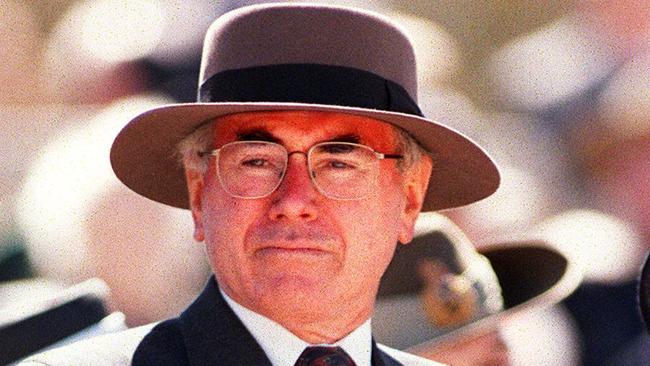
THE UPSIDE
But it’s not all doom and gloom for Aussie icons. Some are surviving well.
RM Williams — the “Bush outfitter” is going gangbusters — in terms of Google search interest. This is a brand with some old school Aussie heritage. Reginald Murray Williams was a swagman born 200km north of Adelaide. The company he started now has revenue of $128 million and plans to increase that to $500 million by 2019. New PM Malcolm Turnbull has even been spotted wearing them.
Qantas is growing too. Its brands carried 4.4 million passengers in the first part of this year — up from 2.9 million in the same time span 10 years ago.
And if you’ve burned your mouth on a pie recently, it was probably an Aussie icon. Four’N Twenty pies are the biggest pie brand in the country, and sales are up. Patties Foods made an extra 5 per cent in pie sales last year.
How did these icons survive? The answer turns out to be obvious.
• RM Williams is pitching itself to city folks with a new range of bags and boots.
• Four’N Twenty is selling “Slams” which are on-the-go snackable pies.
• And Qantas is flying bigger planes with better entertainment and fancier airport lounges.
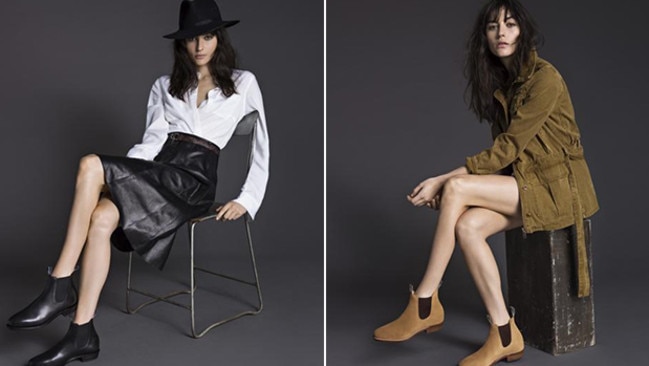
In other words, these brands are changing as we change. That’s how you stay as an icon. Not by being the same exact product, but by staying useful.
So maybe I was too harsh on Weet-Bix at the start. Maybe changing is the only way to stay relevant. The sugary Weet-Bix biscuit might seem foreign and strange to me. But to a new generation of kids, it could be part of a longstanding Aussie tradition.
Maybe the only people having an identity crisis are the ones who think an identity has to be the same for ever.

Jason Murphy is an economist. He publishes the blog Thomas The Think Engine. Follow him on Twitter @jasemurphy.




